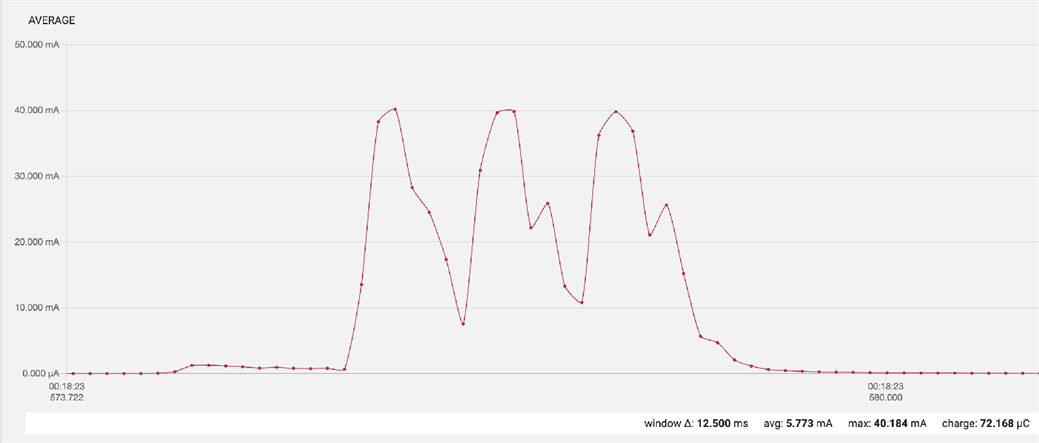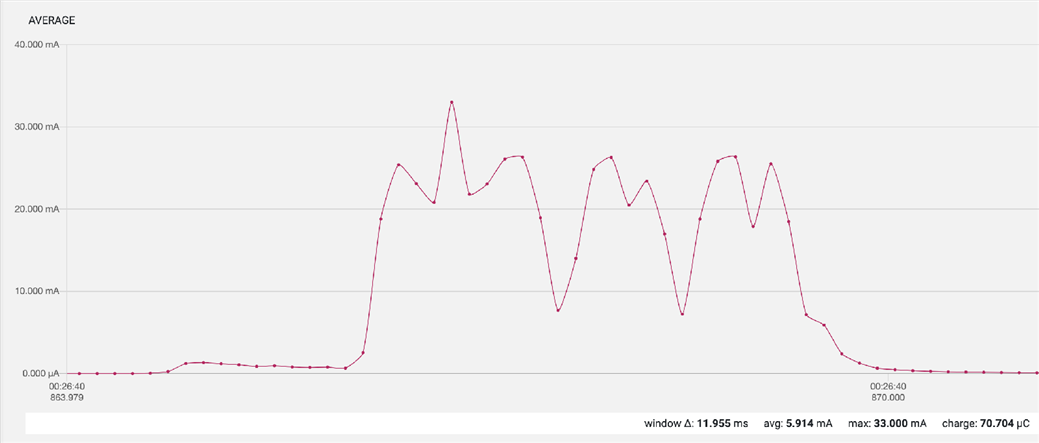I'm developing a bluetooth device that only advertises data, it's set to BLE_GAP_ADV_FLAGS_LE_ONLY_GENERAL_DISC_MODE and BLE_GAP_ADV_TYPE_NONCONNECTABLE_SCANNABLE_UNDIRECTED. I'm advertising 12 bytes of custom data and reading a pin voltage every 5 minutes. For reading the pin voltage, I'm using a timer with NRF_SDH_CLOCK_LF_ACCURACY set to 7 (20 ppm). My advertising interval is set to 1000ms, and tx power is -12. DCDC regulator is enabled. Clock source is internal RC. Input voltage is 3.3V from a bench supply. As far as I can tell, and according to the online power profiler, this should be an extremely low power device. Current peaks should be around 5mA, and average should be around 10uA. However, I'm seeing an average of about 85uA, with my peak current topping out at 34mA. I can't figure out what is causing the high current peaks. Any ideas what's going on? I've included a screenshot of the power profile for 4dbm tx power and for -12dbm tx power for reference.
4dbM:

-12 dbM:



